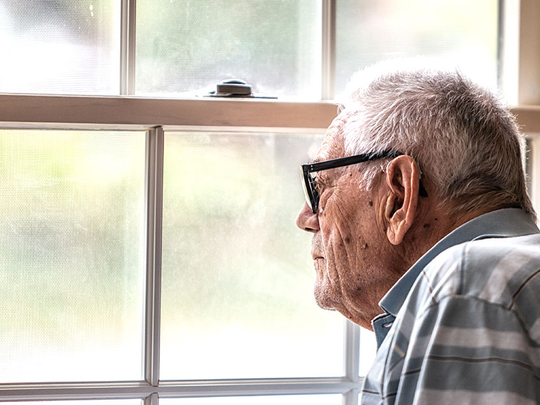
I have never suffered from a depressive episode. I’ve never thought of harming myself or been suicidal, nor have I been afflicted with any serious form of anxiety.
Don’t get me wrong, my mind, like most people’s, is a confounding and mysterious place, but it’s also predictable in its mix of competing thoughts, grand ambitions and impractical whims. It doesn’t agitate or disturb, and there is no sense of an internal army of despair being held back at the gate.
I know this isn’t the case for many people who suffer from clinical depression. In 2014-15 some four million Australians (or 17.5%) reported a “ mental or behavioural condition “.
And yet I have been sad, deeply sad, in many instances throughout my life. Not clinically depressed, thankfully, but sad. Sad because I lost contact with a friend. Sad over the death of a family member. Sad owing to a love lost or a promise unfulfilled. Sometimes the sadness stretched on for weeks, sometimes it lingered for months.
In those early stages of sadness, I never quite knew what to do with the feeling. Should I see someone? Do I need to read more books on analytical psychology? Is there an app for this? Tell me there is an app for this!
Always the emphasis was on moving forward straight away. Leaving the sadness alone never occurred to me. And why would it? When you’re sad, everyone around you is hell-bent on making you less so. Sadness is a state to be expunged and purged; it is not a place you stay in. If you go down, you must get up, and quickly, too. Cry in the bathroom, by all means, but make sure you rejoin the party.
When I was sad, friends would say that I felt things too intensely. But I didn’t want to experience the world in any other way. Even in my sad state, I knew that the ease with which I experienced immense joy and pleasure was inextricably tied to the counterpoint emotion of sadness. You can’t have one without the other. And yet we seem determined to do away with sadness, or at least pathologise it into an easily treatable condition.
In The Loss of Sadness: How Psychiatry Transformed Normal Sorrow into Depressive Disorder, authors Allan V. Horwitz and Jerome C. Wakefield see the problem largely as a diagnostic issue.
When the third edition of the Diagnostic and Statistical Manual of Mental Disorders was published in 1980, it marked a move towards symptom-based diagnoses. If a person presented with a depressed mood, a loss of appetite and tiredness that lasted for more than two weeks, then their sadness was often classified as depression. The authors argued that the patient may very well be depressed, but this type of diagnosis was bound to inadvertently encompass many instances of commonplace sadness, too, because it failed to take into consideration the context within which the sadness was occurring. Now in its fifth edition, the DSM still holds enormous currency in many therapists’ offices.
These days, if someone isn’t seeking to cure their sadness through therapy, there is a range of wellbeing apps, books, courses, expensive retreats or myriad distractions they can deploy. Sadness is discomfiting and challenging, but aided by today’s hyper consumer culture you need never truly feel it.
But what if sadness is good for us?
A US study released this year found that people who accept rather than judge their mental experiences have better health outcomes. The research by psychologists at the University of California, Berkeley, involved testing 1,300 adults and their response to negative emotions.
Those who avoided their negative feelings or judged themselves harshly for feeling bad were more likely to report mood disorders and distress six months later. Conversely, those who accepted the full gamut of their feelings experienced greater wellbeing.
I’m not for a minute suggesting that depression isn’t a significant and serious health problem, or that it shouldn’t be professionally treated. But we should distinguish it from ordinary sadness in order to avoid the false dichotomy that would have us veer from elated hashtag happiness to clinical depression.
Our aversion to sadness feels like a very modern problem, owing in no small part, I’m sure, to our desire to turn our lives into social media campaigns, as if we’re all mini Kardashians with a retinue of staff and designer dogs.
We think that if we’re not happy all the time, completely satisfied in our jobs, and having state-of-the-art travel experiences that something is fundamentally broken.
Yet sadness is a reasonable response to the horrors of the world and the absurdities and disappointments of modern life; a world in which we devote more time to racking up likes than to actively liking each other.
And we don’t need an app to tell us that.
— Guardian News & Media Ltd
Johanna Leggatt is a freelance journalist












